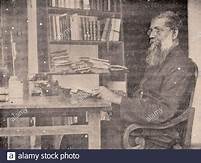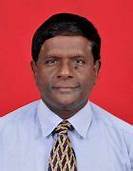
கோப்பாய்க் கோட்டை பற்றிப் பேராசிரியர் புஸ்பரட்னம் அவர்கள் பகிர்ந்துள்ள பதிவினை இங்கு பகிர்கின்றேன். அதில் விடுபட்டுப்போன முக்கியமானதொரு விடயத்தையும் இங்கு சுட்டிக்காட்ட விரும்புகின்றேன். பேராசிரியர் புஸ்பரட்னத்தின் கோப்பாய்க் கோட்டை பற்றிய தகவல்கள் பயனுள்ளவை, ஆனால் இதில் விடுபட்டுள்ள ஒரு விடயத்தைச் சுட்டிக் காட்டுவது இத்தருணத்தில் பொருத்தமாகவிருக்குமென எண்ணுகின்றேன்.
கோப்பாய்க் கோட்டை இருந்த பகுதியை முதலில் கண்டு பிடித்துத் தனது கட்டுரையிலும், நூலிலும் எழுதியவர் சுவாமி ஞானப்பிரகாசர். அவர் தனது யாழ்ப்பாண வைபவ விமர்சனம் என்னும் நூலில் இது பற்றிப் பின்வருமாறு குறிப்பிட்டுள்ளார்:
"நல்லூர்க் கோட்டை அக்காலப்போருக்குப் போதிய பலமுள்ளதாயிருந்தமையால் செகராசசேகரன் அதிலிருந்து போர் தொடுப்பானெனப் பறங்கியர் காத்திருந்தனர். ஆயின் அர்த்தசாமத்தில் அவன் தன் திரவியங்கள் அனைத்தையும் அள்ளிக்கொண்டு அரண்மனைக்கும் நெருப்பு வைத்திட்டுக் கோப்பாய்க் கோட்டைக்கு ஓட்டம் பிடித்தான். இது 'சுடாத செங்கற்களால் நன்றாய்ச் சமைக்கப்பட்டுக் கொத்தளங்களளோடும் உருண்டைக் கோபுரங்களோடும் கூடியதாய் நயமான பெலனுள்ளதாய்' விளங்கியத (Couto). இதன் நிலையம் மானிப்பாய்க் கைதடித் தெருவும் யாழ்ப்பாணப் பருத்தித்துறைத் தெருவும் குறுக்கிடுஞ் சந்திப்பின் , வடகிழக்குக் கோணத்தில் தற்காலம் ஶ்ரீ வோட்ஸ்போத் குடும்பத்தவரது ஆட்சியிலிருக்கும் 'பழைய கோட்டை' என்னும் வளவாமெ எம்மால் சில ஆண்டுகளின் முன்னர் கண்டுபிடிக்கப்பட்டது. (Cey.Antig-11-194)"
பேராசிரியர் இரகுபதி அல்லர் முதன்முதலாகக் கோப்பாய்க்கோட்டை பற்றிக் கண்டு பிடித்தது. ஆனால் இது பற்றி எழுதும் ஆய்வு செய்யும் பலர் சுவாமி ஞானப்பிரகாசரின் கோப்பாய்க் கோட்டை பற்றிய கண்டுபிடிப்பைத் தவிர்த்திருப்பதை அவதானித்துள்ளேன். அவர்கள் அது பற்றி அறிந்திராமல் இருக்கக் கூடும். ஆனால் கோப்பாய்க் கோட்டை பற்றி எழுதும் எவரும் சுவாமி ஞானப்பிரகாசரின் கோப்பாய்க் கோட்டை பற்றிய கண்டுபிடிப்பைத் தவிர்க்கக்கூடாதென்று கருதுகின்றேன். மேற்படி பேராசிரியரின் குறிப்பை, இரகுபதி அவர்களின் நூல்களை வாசிக்கும் எவரும் கோப்பாய்க் கோட்டை பற்றிய கண்டு பிடிப்பை முதலில் செய்தவர் அவரென்று எண்ணிவிடும் அபாயமிருப்பதால் இவ்வெதிர்வினையை இங்கு இட வேண்டியதாயிற்று.
சுவாமி ஞானப்பிரகாசரின் கோப்பாய்க் கோட்டை வெளிவந்த இதழ், கட்டுரை, வெளியான ஆண்டு பற்றிய விபரங்கள் வருமாறு:
இதழ்: Ceylon Antiquary and Literary Register 2(3), Jan 1917, pp.194-195
தலைப்பு: Sankily's Fortress at Kopay
எழுதியவர்: Gnanaprakasar, S. Rev.
சுவாமி ஞானப்பிரகாசர் சிறந்த தமிழறிஞர் மட்டுமல்லர் வரலாற்றறிஞரும் கூட. அவரது இலங்கைத் தமிழர் பற்றிய வரலாற்று எழுத்துகள், கண்டுபிடிப்புகள் எப்பொழுதும் மதிப்புடன் நினைவுகூரப்பட வேண்டியவை. இருட்டடிப்புக்குள்ளாக்கப்படக் கூடாதவை.
இந்த மின்-அஞ்சல் முகவரி spambots இடமிருந்து பாதுகாக்கப்படுகிறது. இதைப் பார்ப்பதற்குத் தாங்கள் JavaScript-ஐ இயலுமைப்படுத்த வேண்டும்.
பேராசிரியர் புஸ்பரட்னத்தின் கோப்பாய்க் கோட்டை பற்றிய முகநூறு பதிவு வருமாறு:
Kōpāy Cańkiliyaṉ Fort By Prof. P. Pusparatnam (Facebook Post)
 Though the kingdom of Jaffna is centered on Nallūr, the Jaffna kings had built small forts outside Nallūr for the defense of the Kingdom. Among these small forts, Kōpāy fort needs special mention. Some scholars say that Kōpāy acted as a sub-capital of Nallūr kingdom. Other scholars say that Kōpāy fort acted as a safety resort of the Kings. If one notices the ruins of Kōpāy fort, one is inclined to think that Kōpāy fort did not act as sub-capital but the fort acted as safety resort of the kings at critical times (Ragupathy 1987). In 1980, this fort had some remains of foundations and some small dilapidated walls. At present, everything has been erased and the place has been transformed into a place of cultivation of crops. The evidences of bricks and stones, found at the place, confi rm that a building structure existed there earlier, and the adjacent tank which was renovated from time to time, now lies as a waste plot, covered with shrubs, bushes and other plants.
Though the kingdom of Jaffna is centered on Nallūr, the Jaffna kings had built small forts outside Nallūr for the defense of the Kingdom. Among these small forts, Kōpāy fort needs special mention. Some scholars say that Kōpāy acted as a sub-capital of Nallūr kingdom. Other scholars say that Kōpāy fort acted as a safety resort of the Kings. If one notices the ruins of Kōpāy fort, one is inclined to think that Kōpāy fort did not act as sub-capital but the fort acted as safety resort of the kings at critical times (Ragupathy 1987). In 1980, this fort had some remains of foundations and some small dilapidated walls. At present, everything has been erased and the place has been transformed into a place of cultivation of crops. The evidences of bricks and stones, found at the place, confi rm that a building structure existed there earlier, and the adjacent tank which was renovated from time to time, now lies as a waste plot, covered with shrubs, bushes and other plants.
This fort lies on the Point-Petro Road, 150m, north of Kōpāy junction, and at the end of a lane which goes on the right-hand side of the main road. Dr. Ragupaty who did extensive research and study of the area, says that the old potteries discovered there might belong to the pre-Nallūr kingdom period (Ragupathy1987). These evidences confi rm that there were dense settlements in the early days of the history of Jaffna. There may be valid reasons to keep Kōpāy fort as an important center of their activities by the kings of Jaffna. It is said that the kings of Nallūr kingdom kept forts or fortifi cations or ramparts at Paṇṇaituṛai, Colombotuṛai, Kōpāy and Cemmaṇi, in view of the defense of Nallūr kingdom.
In the 16th century, during the struggle between the Jaffna kings and the Portuguese, the Jaffna kings used the Kōpāy fort as their main defence centre, especially during the period of king Cańkili. He stationed one section of his troops at Nallūr, as he feared that the Portuguese might invade the kingdom again. The strategic position of Kōpāy made the king to choose it as an important defence centre in times of war. Kōpāy served as a main defence centre to stop invasion from the main land of Teṉmarācci. The small strip of lagoon between Kōpāy and Teṉmarācci was favourable to achieve this objective (Rasanayagam 1926). There are evidences that in 12th century A.D, Parākramabāku-1 who ruled Polanaṛuwa, stationed his troops opposite to Kōpāy, at a place called “Maṭṭuvāl” (Epigraphica Indica.Vol.XXII:66 – 92). Some contemporary Tamil inscription of Cōḻas reveals that they captured a place called “Maṭṭuvāl” which was opposite to Kōpāy and took prisoners of war and elephants.
It is said that in 16th century A.D, after the defeat at the hands of Portuguese, Cańkili fled to Kōpāy and later reached his Mantuvil fort through Teṉmarāṭci. Later period Tamil literatures reveal that trade between Jaffna and South India took place through Point-Pedro, Kaccāi and Kōpāy. Likewise, Kōpāy gained importance in many ways during the Jaffna kingdom. As such, the Jaffna kings preferred to build a fort at Kōpāy. Kōpāy might have been the 2nd populous region, next to Nallūr, during the period of Jaffna kingdom. The discovery of many coins of Jaffna kingdom at this place confi rms the above facts (Gnanaprakasar, 1928 in Tamil).
Courtesy: https://www.facebook.com/push.malar/posts/4939023606215554